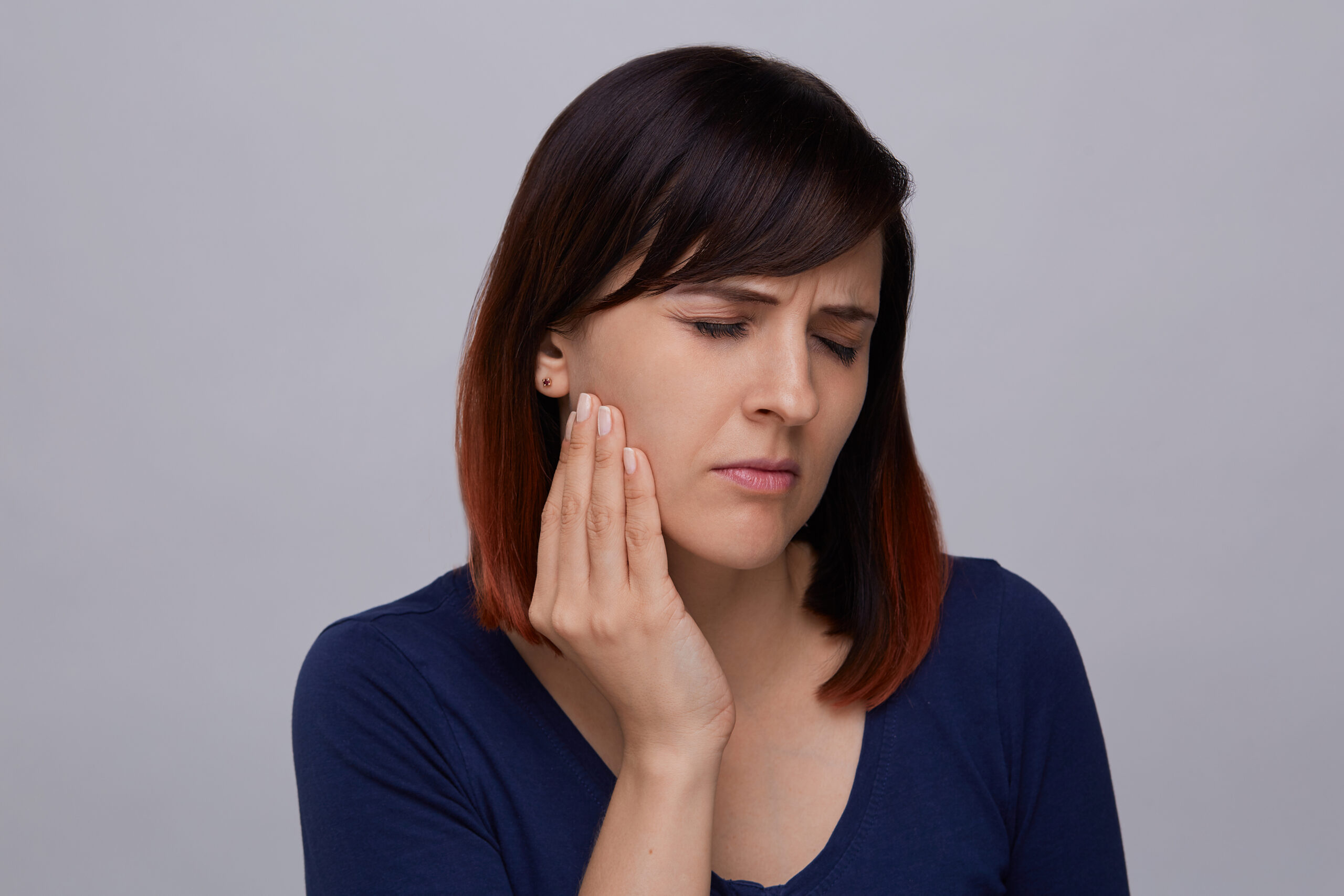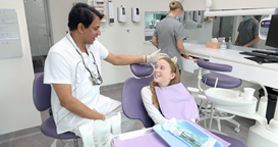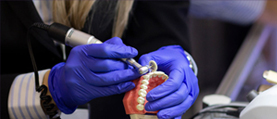Care After Wisdom Tooth Removal
Proper care after wisdom tooth removal is essential for a smooth, pain-free recovery and to prevent complications like infection or dry socket. In Australia, most patients recover within a week, but your aftercare routine plays a major role in how well and how quickly you heal.
This article explains exactly what to do after tooth extraction, including the dos and don’ts, what to eat, and how to speed up recovery. You’ll also find practical Australian-specific advice from the team at Bespoke Dental Studio to help you heal comfortably and confidently.
Understanding Wisdom Tooth Removal
Why wisdom teeth are removed
Wisdom teeth, or third molars, usually erupt in your late teens or early twenties. They often become impacted (stuck under the gums or jawbone) or grow at odd angles, which can cause pain, infection, and damage to nearby teeth.
Common reasons for extraction include:
- Impaction or partial eruption
- Gum infection or inflammation (pericoronitis)
- Crowding or shifting of nearby teeth
- Tooth decay or cyst formation
Removing wisdom teeth is a common and safe procedure, but post-operative care determines how smoothly you recover.
The First 24 Hours After Wisdom Tooth Removal
The first 24 hours are the most crucial phase of healing. Following your dentist’s instructions closely helps prevent bleeding, infection, or complications.
What to do:
- Bite gently on gauze: Keep pressure on the surgical site for 30–45 minutes to help stop bleeding.
- Apply ice packs: Use for 10 minutes on and off to reduce swelling.
- Rest: Avoid physical activity and keep your head elevated.
- Take prescribed medications: Follow the dosage for pain relief or antibiotics as directed by your dentist.
- Drink plenty of water: Stay hydrated but avoid using a straw.
What to avoid:
- Don’t rinse, spit, or brush near the extraction site for the first 24 hours.
- Avoid smoking, vaping, or alcohol these delay healing.
- Don’t touch the area with your fingers or tongue.
Pro Tip: Keep your head slightly elevated even while sleeping to reduce swelling and promote blood clot formation.
Days 2–3: Reducing Swelling and Managing Discomfort
By the second or third day, swelling typically peaks and then starts to subside. Mild discomfort, bruising, and tightness around the jaw are normal.
What to do:
- Rinse gently with warm salt water (½ teaspoon salt in a cup of warm water) after meals.
- Continue taking prescribed pain medication as needed.
- Switch from cold compress to warm compresses if swelling persists after 48 hours.
- Eat soft, nutrient-rich foods like yoghurt, mashed potatoes, and scrambled eggs.
What to avoid:
- Avoid spicy, crunchy, or acidic foods that may irritate the wound.
- Refrain from intense exercise until your dentist clears you.
Day 4–7: Healing and Returning to Normal Activities
Most patients notice major improvement by day 4. You can gradually return to normal routines while maintaining gentle oral hygiene.
Tips for this stage:
- Brush your teeth carefully, avoiding the surgical site.
- Continue saltwater rinses 3–4 times daily.
- Avoid chewing directly on the extraction side.
- Resume gentle daily activities, but avoid contact sports or heavy lifting.
At this stage, you should start feeling much better. However, if swelling or pain worsens, contact Bespoke Dental Studio immediately as this may indicate infection or dry socket.
What to Eat After Tooth Extraction
Eating the right foods promotes faster healing and reduces the risk of disturbing your surgical site.
| Safe Foods (First 3 Days) | Foods to Avoid |
| Yoghurt, pudding, custard | Chips, crackers, nuts |
| Mashed potatoes, pumpkin soup | Hot or spicy food |
| Smoothies (no straw) | Hard fruits and vegetables |
| Scrambled eggs, soft pasta | Alcohol and fizzy drinks |
After Day 4
You can begin introducing soft solids like:
- Cooked rice
- Soft fish or minced meat
- Well-cooked vegetables
Avoid using straws for a week, as suction can dislodge the blood clot and cause dry socket a painful condition that exposes the bone and nerves.
Do’s and Don’ts After Tooth Removal
Do’s:
- Keep your mouth clean with gentle saltwater rinses.
- Follow your dentist’s aftercare instructions exactly.
- Take pain medication on schedule, not just when you feel pain.
- Stick to soft, cool foods and stay hydrated.
- Attend your follow-up appointment at Bespoke Dental Studio to monitor healing.
Don’ts:
- Don’t smoke or vape for at least 72 hours.
- Don’t drink alcohol or use mouthwash containing alcohol.
- Don’t poke or touch the extraction site.
- Don’t skip meals even soft foods help your body heal.
Managing Common Post-Extraction Symptoms
Swelling
This is a normal response to surgery. Apply ice packs intermittently for the first 24 hours, then use warm compresses after two days.
Bleeding
Minor oozing is normal. Bite on clean gauze or a damp tea bag for 20–30 minutes to help blood clotting. Persistent bleeding after 24 hours requires dental attention.
Pain or Soreness
Pain usually peaks around day two or three, then eases. Use prescribed medication and avoid over-the-counter aspirin, which can thin the blood.
Dry Socket
This occurs when the blood clot dislodges prematurely, exposing the bone. Symptoms include severe pain, foul taste, and visible bone. Contact your dentist immediately if this occurs.
Quick Answers: Wisdom Tooth Removal Aftercare
Q1: How long does recovery take after wisdom tooth removal?
Most patients recover in 7–10 days, depending on the complexity of the extraction and adherence to aftercare.
Q2: When can I eat normally again?
Soft foods are recommended for 3–4 days. Gradually reintroduce solids once chewing becomes comfortable.
Q3: When can I brush my teeth?
You can brush gently 24 hours after surgery, avoiding the extraction area for a few days.
Q4: Can I exercise after extraction?
Avoid strenuous activity for 3–5 days, as increased blood pressure can disturb clot formation.
Q5: What if I have bad breath after surgery?
Mild odour is common due to healing tissues. Maintain gentle rinsing with salt water and avoid alcohol-based mouthwash.
Speeding Up Recovery: Dentist-Approved Tips
1. Keep the Extraction Site Clean
Gently rinse after meals to remove food debris, but avoid vigorous swishing. Saltwater is safe and helps reduce bacteria.
2. Get Plenty of Rest
Healing requires energy. Aim for eight hours of sleep per night and avoid unnecessary strain.
3. Stay Hydrated
Drink water regularly dehydration slows recovery and increases infection risk.
4. Follow All Prescribed Medications
Complete any antibiotic course even if symptoms improve early. This prevents bacterial resistance and infection.
5. Avoid Smoking or Vaping
Nicotine restricts blood flow, delaying tissue repair and increasing dry socket risk.
6. Attend Your Follow-Up Appointment
Your dentist will ensure proper healing, remove any remaining sutures if needed, and check for signs of infection.
What to Expect at Your Post-Operative Visit
At Bespoke Dental Studio, your follow-up visit usually happens 5–7 days after extraction. The dentist will:
- Examine the healing site
- Assess for infection or complications
- Remove stitches (if non-dissolvable)
- Provide further hygiene or dietary guidance
If healing progresses normally, you’ll be cleared to resume regular dental hygiene practices.
When to Call Your Dentist
While mild discomfort and swelling are expected, contact your dentist immediately if you experience:
- Severe or worsening pain
- Excessive bleeding after 24 hours
- Fever or chills
- Pus or foul odour from the extraction site
- Difficulty opening your mouth (trismus)
Prompt care prevents complications and ensures a healthy recovery.
Wisdom Tooth Care Costs and Recovery Expectations
In Australia, the average cost of wisdom tooth removal ranges from $250–$400 per tooth for simple extractions and up to $600–$900 for surgical removals under local anaesthetic.
Healing timelines vary slightly depending on climate and lifestyle. Warmer conditions may increase swelling risk, so maintaining hydration is especially important for Aussie patients.
Private health insurance may cover a portion of surgical fees check your policy for details under “major dental” or “oral surgery”.
The Importance of Professional Aftercare
Following up with your dentist is as crucial as the initial extraction. Skipping check-ups may lead to complications that could have been prevented early.
At Bespoke Dental Studio, every patient receives a personalised post-operative care plan, including dietary guidance, medication schedules, and follow-up reminders to support full recovery.
FAQs About Wisdom Tooth Removal Recovery
- Can I use mouthwash after wisdom tooth removal?
Avoid commercial mouthwash for at least 3 days. Instead, rinse gently with saltwater to avoid irritation. - What should I do if I get food stuck in the extraction site?
Rinse gently with saltwater or use a syringe provided by your dentist to flush the area carefully. - How can I tell if my wound is infected?
Signs include persistent pain, swelling, fever, or pus discharge. Contact your dentist immediately if these occur. - When can I drink coffee again?
You can resume drinking coffee after 48 hours, provided it’s not hot. Heat can dissolve the blood clot prematurely. - Is it normal to have jaw stiffness after extraction?
Yes, mild stiffness or difficulty opening your mouth (trismus) is common and should resolve within a week. Warm compresses can help.
Final Thoughts
Taking proper care after wisdom tooth removal ensures a smooth and complication-free recovery. The most important things to remember are to keep the area clean, avoid smoking or alcohol, eat soft foods, and attend follow-up visits.
At Bespoke Dental Studio, our experienced dentists provide tailored aftercare instructions and professional monitoring to ensure your healing process is fast and comfortable. Whether it’s your first extraction or a complex surgical case, we’ll support you every step of the way.




